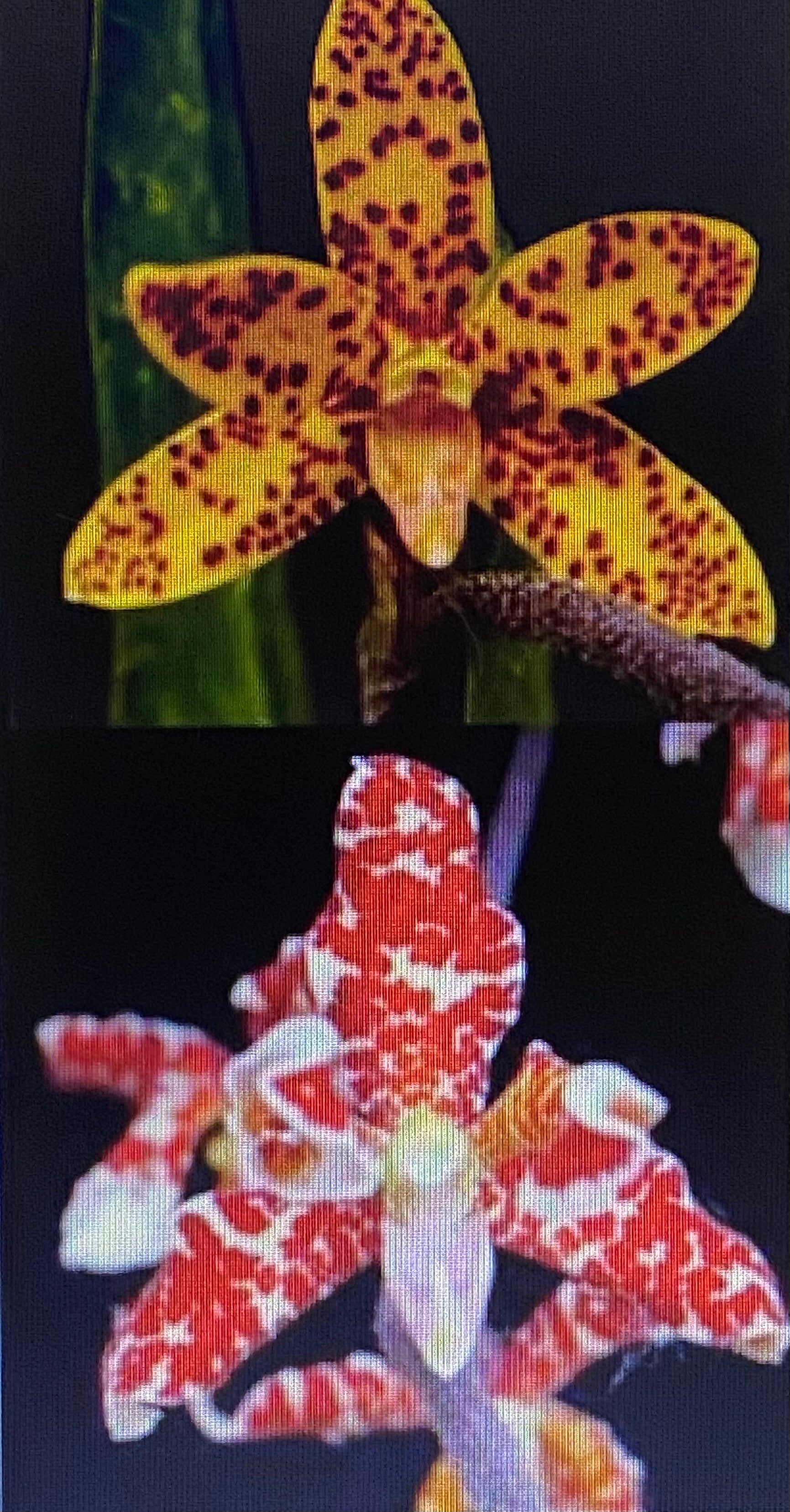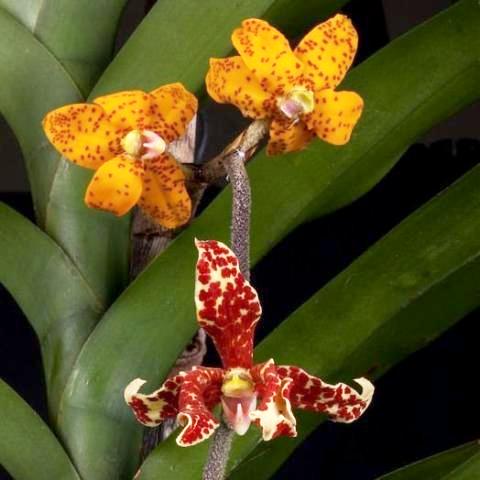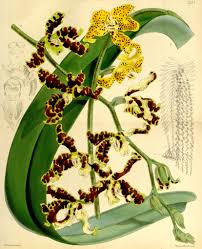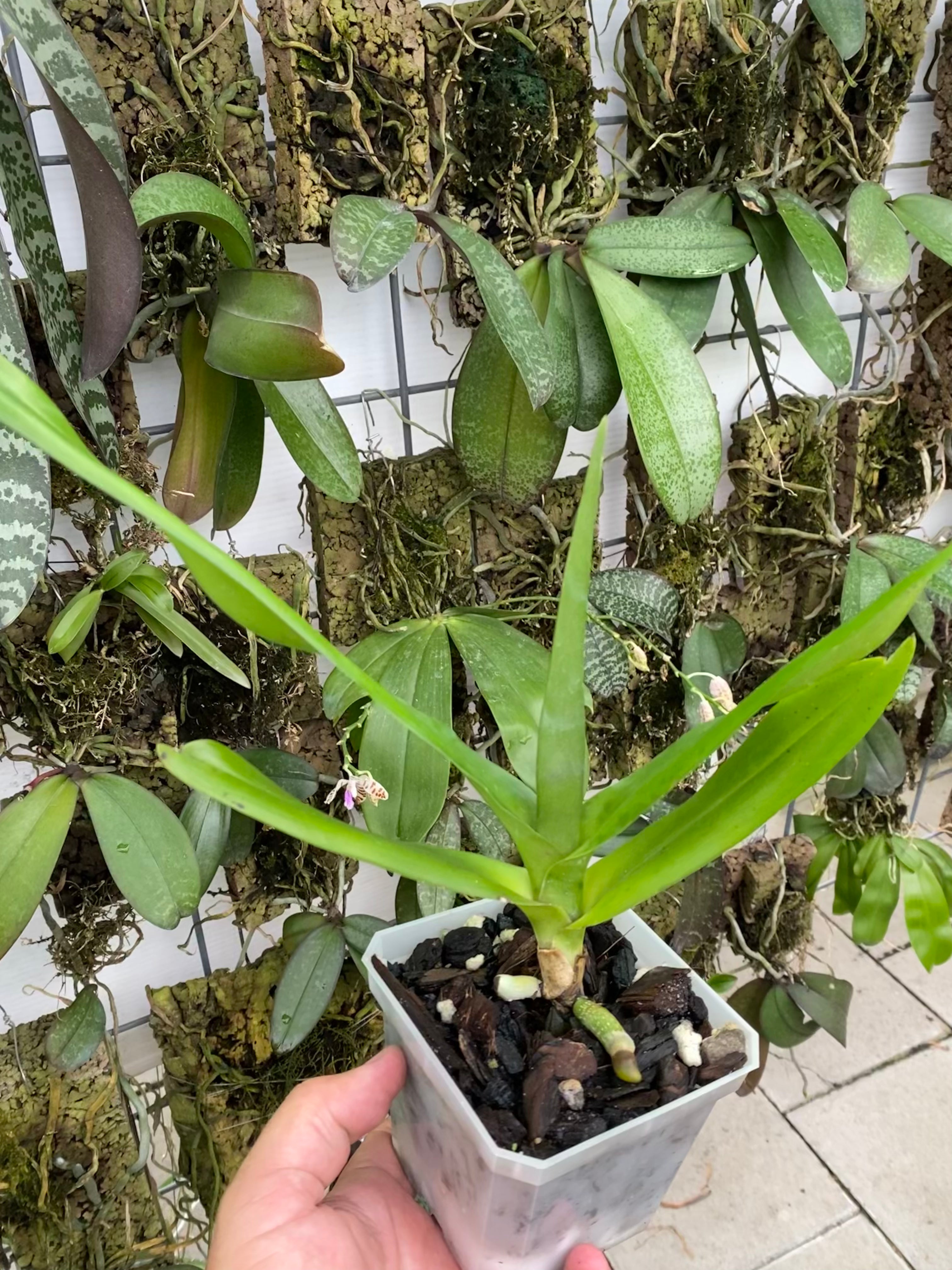
Dimorphorchis lowii is a Hard to find species! RARE. Two color flowers on the same flower spike! Dimorphorchis lowii is native to Borneo .
Plants are in 4” cone pots well established root system with a 9-12” leaf span. Seed grown.
This vandaceous orchid is native to the island of Borneo, shared by three different countries: Indonesia, Malaysia, and Brunei. This epiphyte inhabits low hill, wet, tropical forests.
The plant of this species is huge, reaching up to more than 3 m tall (more typically 1 m tall), with leaves of up to 70‒90 cm long. This late summer through early winter bloomer produces extremely long, slender, flexible, pendulous inflorescences, sometimes reaching up to 3.6 m long! It typically produces about 25 blooms per inflorescence. This species is notable for producing two types of flowers, quite different in color, shape, size, and fragrance. Indeed, that is what the name Dimorphorchis means in Ancient Greek: dis = “twice”, morphe = “form or shape,” and orchis = “testicle” (in this case refers to the flowers as reproductive organs). One might even think that these flowers belong to different species, except that they occur on the same inflorescence. The two or three most basal flowers are strongly fragrant, about 6 cm across, with broader, shorter, and fleshier sepals and petals, bright tawny yellow, with red orange dots; the remaining flowers are not fragrant, about 7 cm across, with narrower, twisted, sepals and petals having wavy margins, white to pale yellow, with larger red orange blotches, usually fusing together. The red orange spots are barely visible from the back surface of the flowers. The spike, flower pedicels, and back surface of the sepals and petals are “hairy.” The lip in both forms is slipper-shaped, yellow basally and suffused light fuchsia distally, with red orange dots. The column is greenish yellow, spotted on red orange.
The reason for this floral dimorphism is not totally clear. One hypothesis states that the most basal, fragrant flowers are the ones attracting the pollinators to the whole inflorescence, since the production of pollinator-attracting chemical compounds is energetically costly for the plant, especially when a single plant may have up to 20 inflorescences carrying more than 500, relatively big flowers in total! Another hypothesis states that this floral dimorphism is related to some sort of “pollinator insurance,” with the most basal, fragrant flowers attracting diurnal pollinators and the remaining, paler ones attracting nocturnal pollinators.
This warm-growing species likes temperatures ranging between 70‒86°F, bright light (avoid direct sunlight), good air circulation, and humidity around 80% all year round; but it can be kept slightly drier during the winter months.

LARGE FLOWERING SIZE PLANTS ARE ALSO AVAILABLE , just contact us for those!
Returns Policy
Due to the delicate nature of our orchids, all of our products may not be returned. If you're unhappy with your purchase, please contact orders@orchidclassics2u.com with your order number and reason for dissatisfaction with your order. We will do our very best to ensure you're happy with your Orchid Classics shopping experience.
Shipping
We can ship to virtually any address in the world. Note that there are restrictions on some products, and some products cannot be shipped to international destinations.
When you place an order, we will estimate shipping and delivery dates for you based on the availability of your items and the shipping options you choose. Depending on the shipping provider you choose, shipping date estimates may appear on the shipping quotes page.







